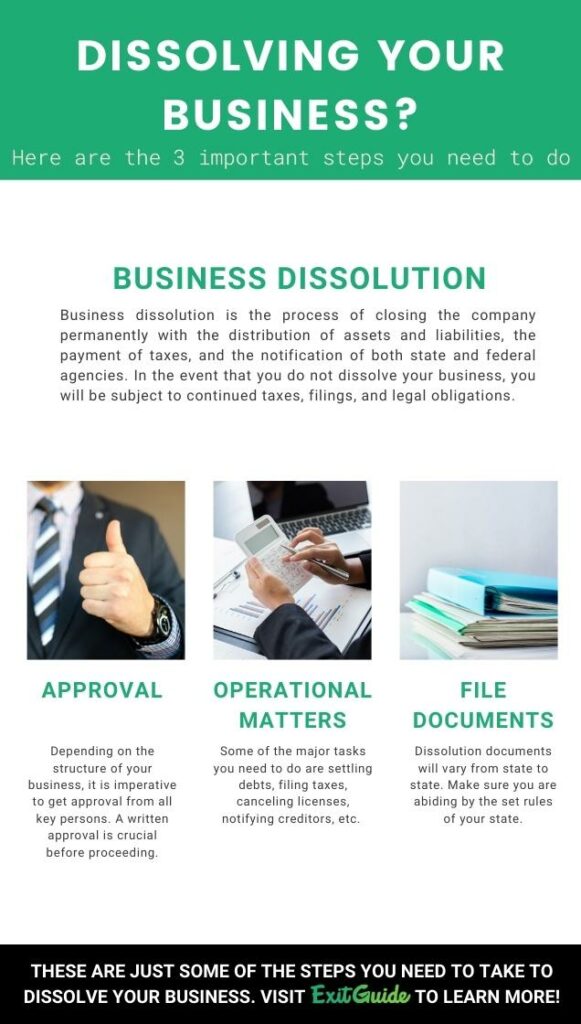Dissolving a business is the final step in shutting down a business and it is a must-do. When a business is dissolved, it closes permanently and all the assets and liabilities are distributed and all tax liabilities are paid and both state and federal agencies are officially notified. This is an exit strategy that some business owners use when they no longer want to run their business. If you fail to dissolve your business, you may be subject to continued taxes, filing, and other legal work.

When dissolving your business you should consult with an expert and take as much precaution as possible – this may be a CPA, attorney, or paralegal that is familiar with the process in your state. You can save time and money by preparing before engaging an expert so we want to share some important steps that business owners can take prior to dissolving their business includes:
Approval From Ownership
The first step in dissolving your business is consulting with all of the owners of the business and getting their approval. Dissolving your business is a final action that will impact everyone, it’s crucial to get written approval from all involved parties before proceeding.
If your company is a sole proprietorship, you can decide to dissolve the business at any time. In contrast, if your business has any type of partnership structure, all partners must be on board with the dissolution process. If your company structure is large and you have a board of directors, they must also approve the dissolution of the business
Take Care Of Major Operational Needs
Once approval is gained, you must take care of all of the major operational needs to ensure that the business can come to a close. Some of the major activities that you need to do include:
- Filing and paying all taxes
- Settling debts
- Cancelling licenses, agreements, contracts
- Notifying customers, vendors, etc
- Notifying creditors
- Distributing assets
- A final update of your accounts/books
Once these operational needs are complete, you are ready to dissolve the business. It’s key to note that all of these operational needs have to be taken care of before you file for the dissolution of your business.
Need help? Take our free assessment and access expert resources
File Dissolution Documents
After getting approval from the main stakeholders in the business, you must also file dissolution documents. These documents will vary from state to state, so make sure you’re following the right procedures for the state your business was incorporated in. Again, enlisting help from an experienced professional can reduce the risk of errors. The specific document that you need to file is called the Certificate of Dissolution. Each state has its own procedure for dissolution, some states will refer to the Certificate of Dissolution as the Articles of Dissolution.
These are just some of the steps you can take to dissolve your business. To learn more about the different exit options available for your business, take a free assessment here.
